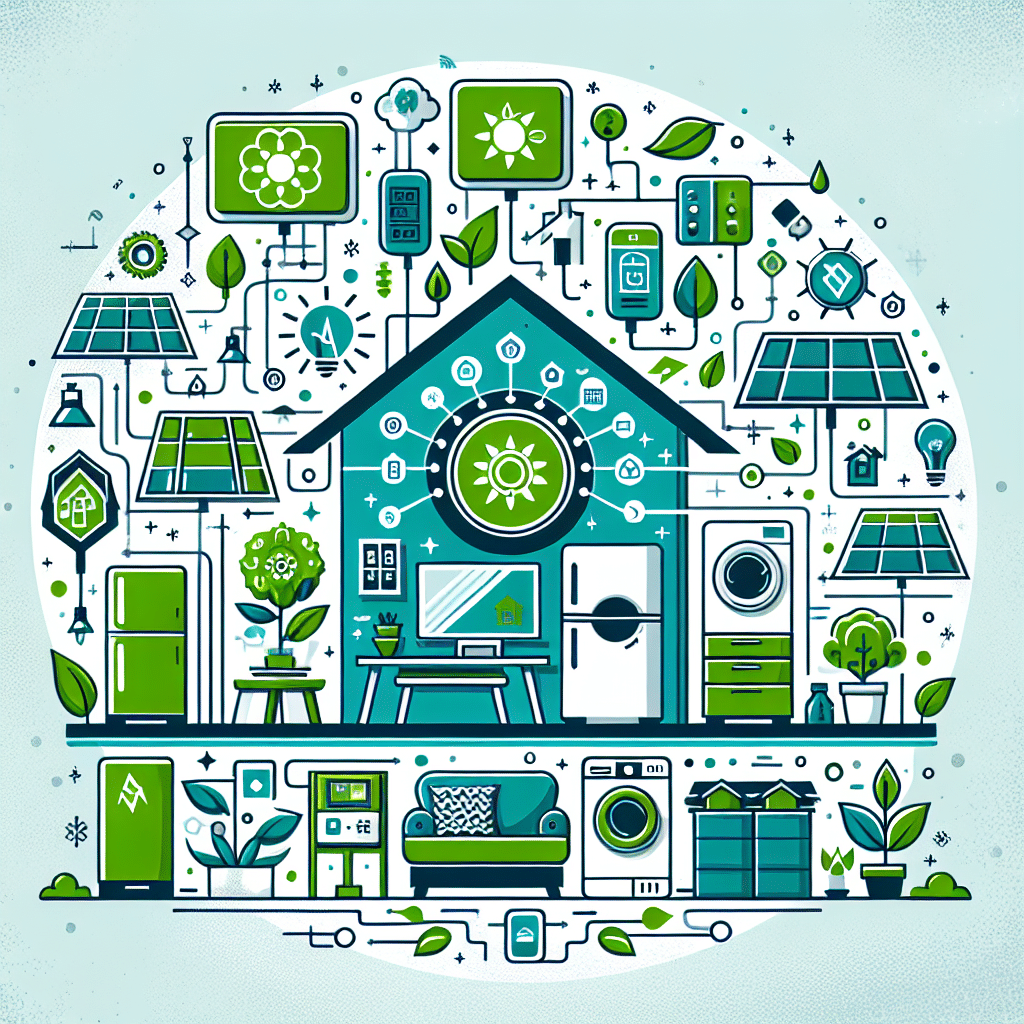Eco-Friendly Tips for Connected Homes
Understanding Connected Homes
A connected home integrates devices using the Internet of Things (IoT), allowing homeowners to control various functions remotely. While tech gadgets enhance convenience, they can also consume significant energy. However, with eco-friendly practices, homeowners can minimize their ecological footprint while enjoying smart living.
Energy-Efficient Smart Thermostats
Utilizing smart thermostats, like Nest or Ecobee, can dramatically reduce energy consumption. These devices learn your preferences and adjust temperatures based on your habits. Set schedules to lower heating and cooling when you’re not home. Opt for eco modes which optimize energy savings, ensuring your home remains comfortable while using minimal resources.
Smart Lighting Solutions
Switching to smart LED bulbs can significantly decrease your energy usage. These bulbs use up to 75% less energy than traditional incandescent bulbs. Opt for systems that allow you to schedule lights or control them via voice commands. Consider using motion sensors that automatically turn off lights when a room is unoccupied, maximizing efficiency.
Solar Power Integration
Adopting solar panels alongside your connected home setup can yield substantial energy savings. Modern solar technologies can connect to home management systems, enabling real-time energy monitoring. Some smart devices can even adjust their operations based on the solar energy availability, ensuring efficient use of renewable resources.
Energy Monitoring Plugs
Smart plugs allow you to track energy consumption of specific devices. By providing insights into usage patterns, these plugs help identify energy-hungry gadgets. Pairing smart plugs with energy-efficient devices can optimize performance and minimize wasted energy through smart scheduling.
Smart Appliances
Invest in ENERGY STAR-labeled smart appliances. From refrigerators to washing machines, these energy-efficient models consume less electricity and water. Many smart appliances can be programmed to run during off-peak hours, utilizing resources more effectively and saving you money on utility bills.
Eco-Friendly Smart Home Hubs
Using a smart home hub enables you to manage various connected devices effortlessly. Choose hubs designed with energy efficiency in mind, allowing you to streamline operations and reduce the overall energy footprint. Programmable routines can automate schedules, ensuring devices operate only when necessary.
Smart Water Management
Water conservation is essential for an eco-friendly home. Smart irrigation systems can optimize watering schedules based on weather conditions and soil moisture. Smart faucets and showerheads can minimize water usage by controlling flow rates without sacrificing pressure. Implementing these systems contributes to reducing water waste.
Sustainable Landscaping Automation
Integrating smart landscaping tools, such as automated mowers and planting systems, can enhance your garden’s sustainability. Smart plant sensors can monitor soil moisture and nutrient levels, providing data to adjust watering and fertilization schedules. This ensures optimal plant health while conserving resources.
Home Energy Storage Solutions
Consider integrating battery storage systems like the Tesla Powerwall. These systems store energy generated from renewable sources, allowing you to utilize solar energy during non-sunlight hours. Smart energy management systems can optimize the usage of stored energy, reducing dependence on grid power.
Virtual Assistants for Energy Management
Employ virtual assistants, such as Amazon Alexa or Google Assistant, to manage your home’s energy consumption. Voice control offers convenience in accessing information on energy usage and setting schedules for various devices. They can provide reminders for unplugging devices, ultimately encouraging greener habits.
Eco-Friendly Home Security
Smart security devices can enhance efficiency while ensuring safety. Opt for battery-operated security cameras with energy-saving modes, reducing power consumption. Systems that allow you to monitor and control your home remotely help in reducing needless energy expenditure when you’re not home.
Automated Window Treatments
Smart blinds and shades help in regulating temperature by utilizing natural light effectively. Program these devices to open during winter sunlight to warm your space, and close during the heat of summer, reducing the need for air conditioning. This creates a naturally comfortable indoor environment while reducing reliance on heating and cooling systems.
Use of Smart Sensors
Deploying smart sensors can elevate your home’s efficiency. Motion sensors can manage lighting, while door/window sensors can alert you when they are left open, mitigating energy loss from heating or cooling. Smart thermostats can also use occupancy sensors to adjust heating or cooling based on real-time room usage.
Eco-Conscious Home Tech Upgrades
When upgrading or acquiring new devices, prioritize energy-efficient technology. Research product lifespans, recyclability, and environmental certifications. Products designed for longevity and sustainability contribute to a lower overall ecological impact.
Sustainability in Home Marketing
Promote the eco-friendly aspects of your connected home through responsible marketing strategies. Showcase your sustainable practices when selling or renting. Many buyers today consider energy-efficient homes more desirable, leading to potential increases in property value.
Opt for Biodegradable Materials
For any installations or renovations, select eco-friendly materials. Use biodegradable, sustainable building materials that have a reduced environmental impact. This approach not only contributes to eco-friendliness but also enhances your home’s aesthetic appeal and health safety.
Conclusion
Incorporating these eco-friendly tips into your connected home ensures you lead a sustainable lifestyle without sacrificing convenience. These practices not only reduce your environmental impact but can also yield substantial long-term savings, showcasing how technology and sustainability can work hand-in-hand. By integrating innovative, energy-efficient solutions into your connected home, you can enjoy the benefits of modern living while nurturing the planet.
